Design & Making: Student Final Projects

Last month Ryan and I were invited to visit DCP Alum Rock High School, a charter school in San Jose, to see student final presentations for their Design & Making class.
This semester-long, mixed grade (9-12) class was a new offering created by computer science teacher John Benoit. The class is part of a Career Technical Education (CTE) pathway, a way to offer students hands-on experience in engineering and product design.
Students gave presentations on their design process and showed off their final projects.
Here a few we saw:
Jellyfish Lamp by Mary-Kate O’Connor (Grade 12)

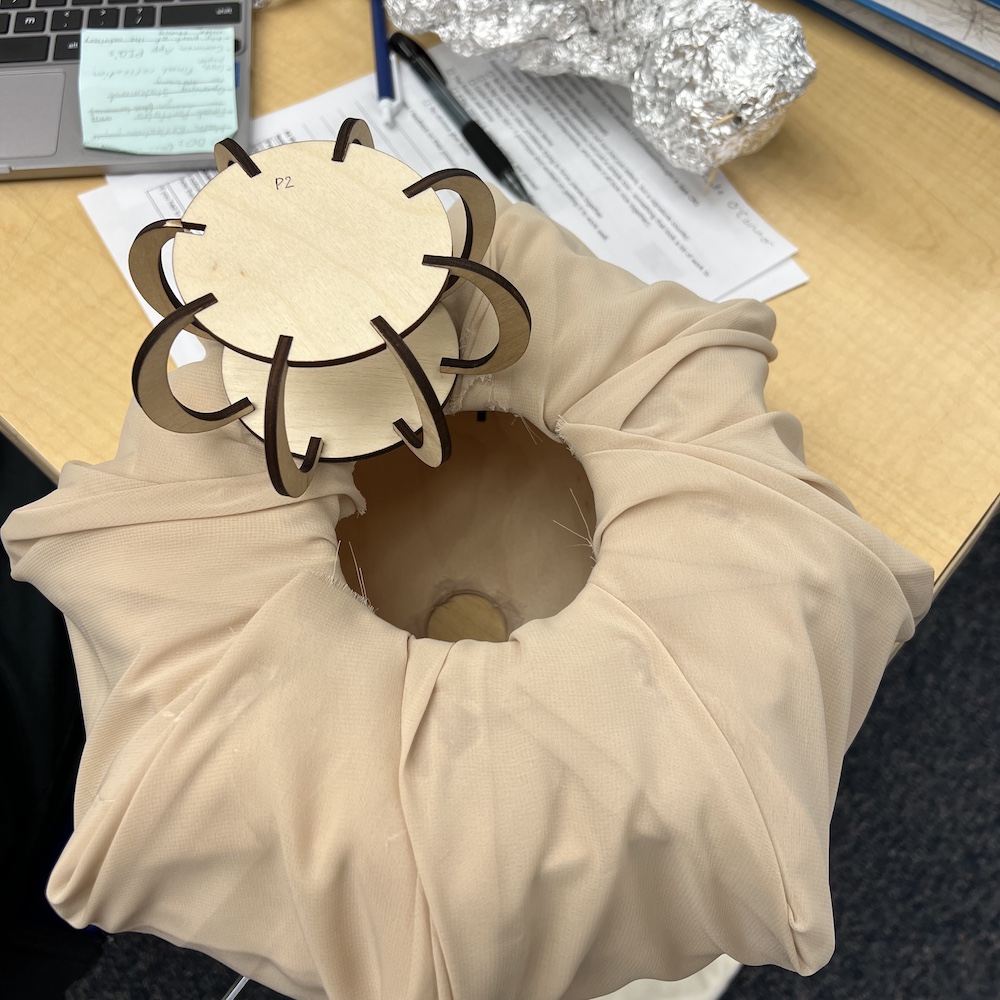
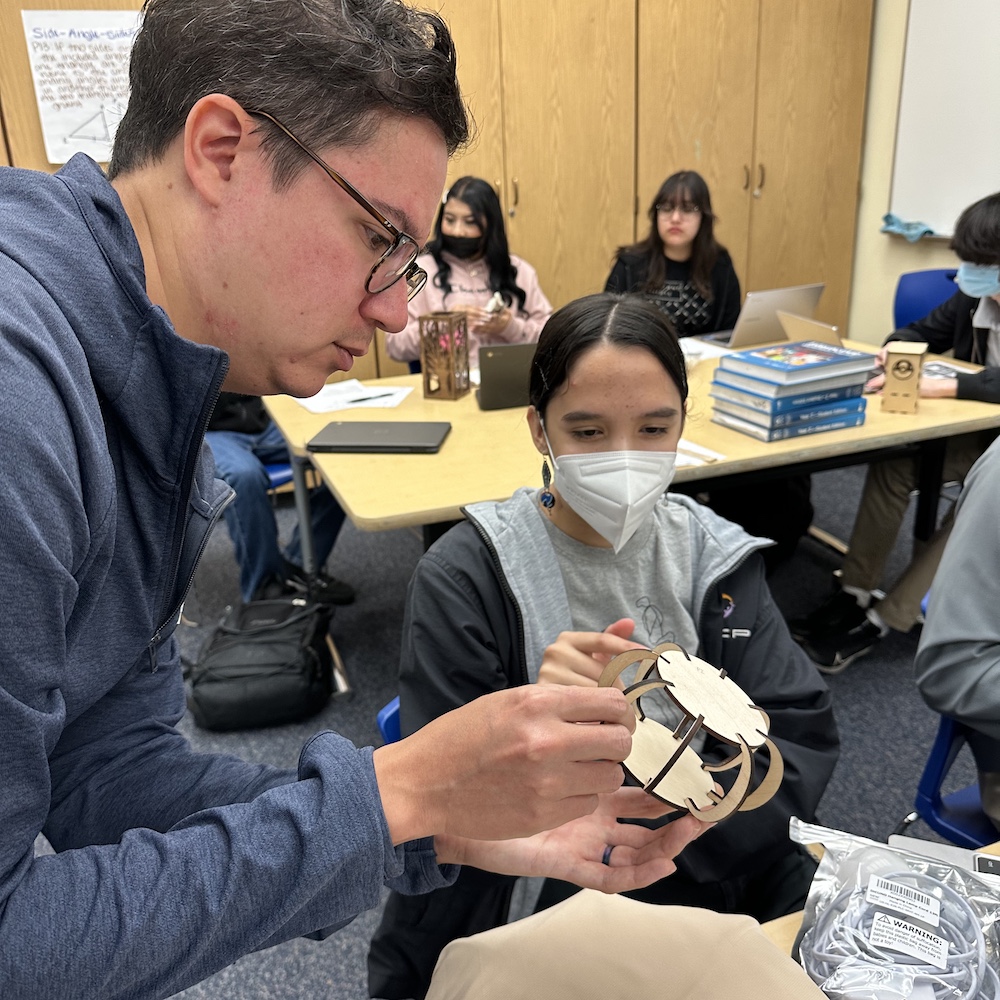
Mary-Kate created a hanging lamp inspired by a jellyfish.
The “skeleton” is laser cut plywood: two circles and ribbed arcs connecting them to create the body of the jellyfish.
These photos show an early, scaled-down prototype and the finished part wrapped in cloth.
Mary-Kate told me that Cuttle’s Rotational Repeat modifier was very useful for creating the radial slots in the circles for attaching the ribs.
The top of the body has a hole that is perfectly sized for an LED light bulb to screw into its socket.
The tentacles are sculpted from aluminum foil.
Mary-Kate’s Jellyfish Lamp was one of the most “out of the box” projects in the class. I love the use of mixed materials and the creative construction of the curved shape.
Card & Dice Storage Box by Ethan Langtry (Grade 10)
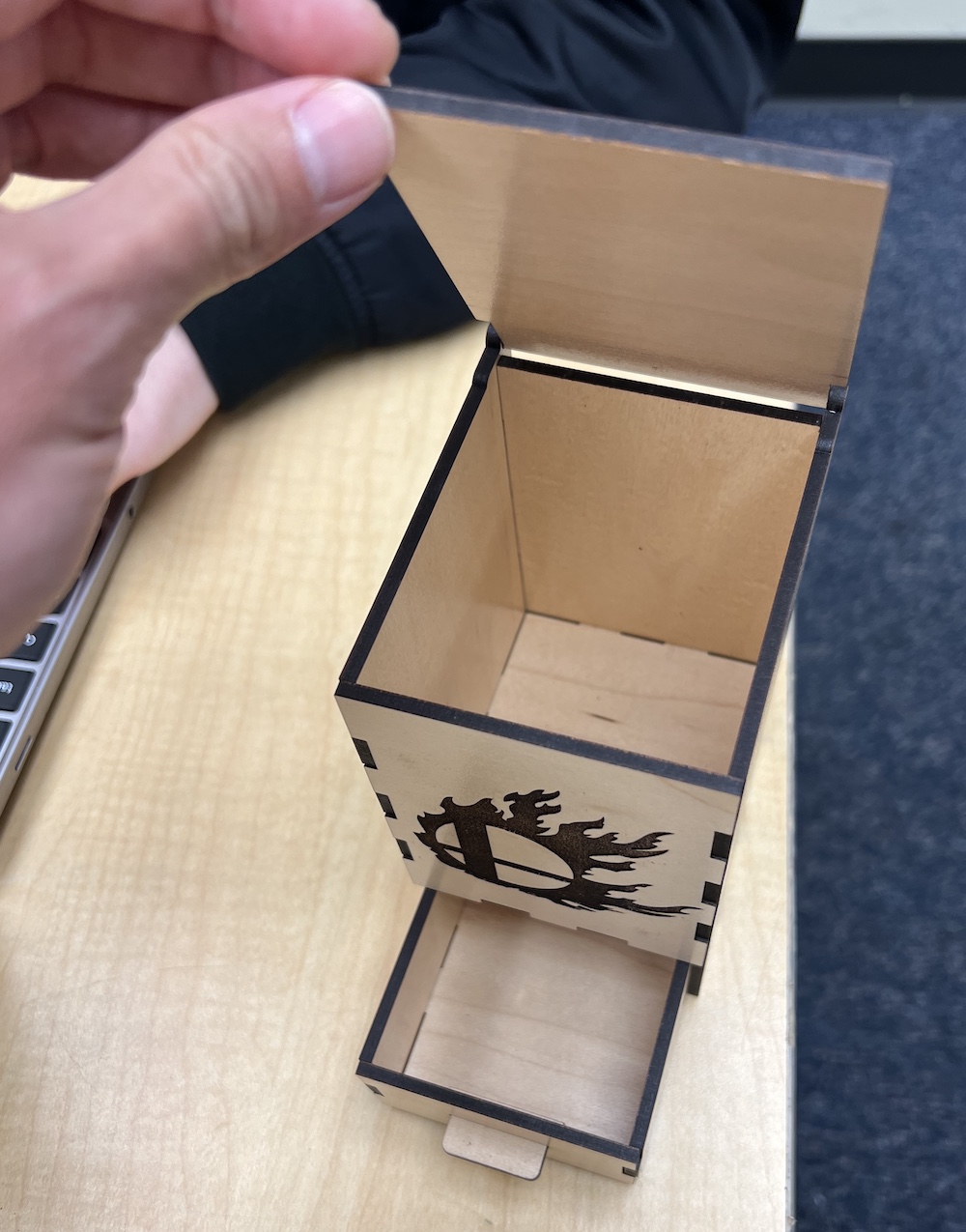

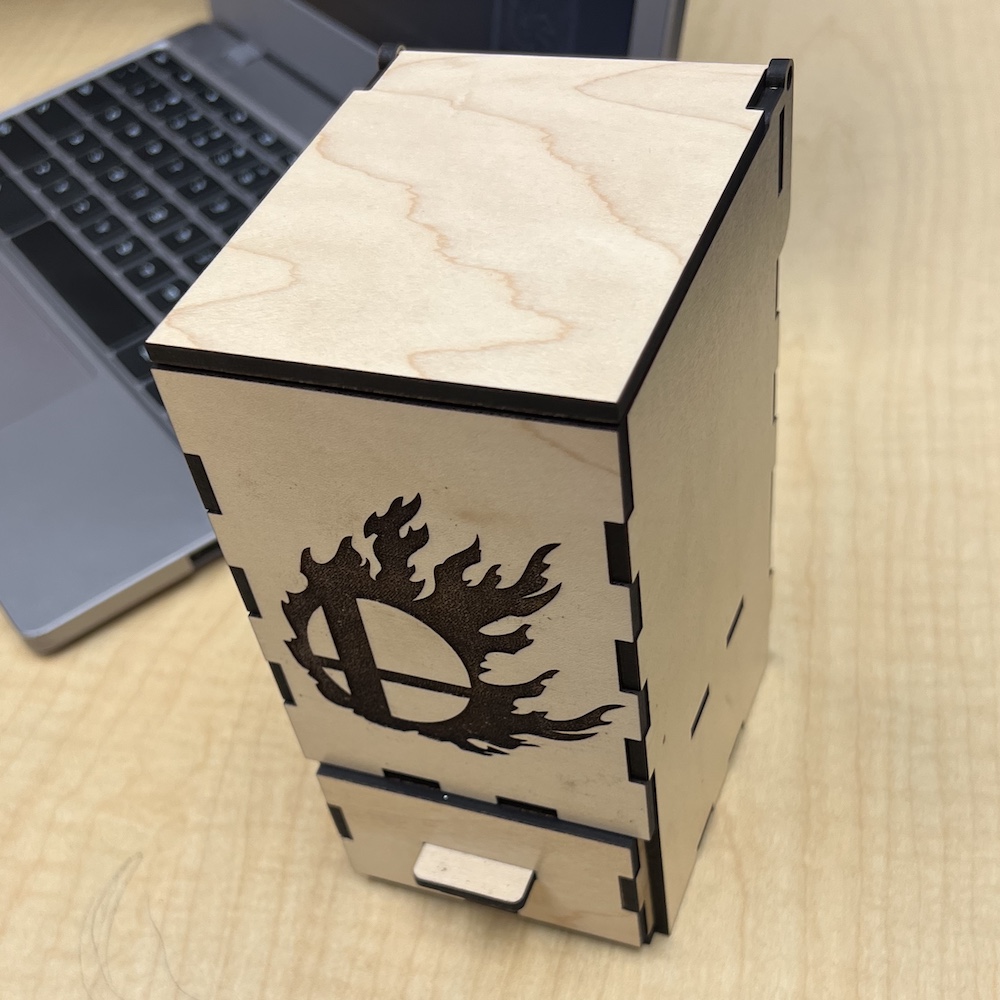
Ethan created a storage box for his game pieces.
He started with Cuttle’s Open Box Template and modified it to add several features. First, he designed a hinged lid at the top. He also added a divider, a drawer on the bottom with a pull tab, and engraved graphics on the faces.
Ethan told me he was proud of his project but he didn’t realize how many design iterations would be required. There are a few more fixes he’d include with another iteration.
In my experience, a design might work perfectly in my head but when I actually try it — in the real world — I find design issues I hadn’t thought of. It’s a key learning moment. It’s where theory meets practice and what makes design such an interesting discipline!
Mr. Benoit told me there were certain design principles he’d try to impart to his students but no matter how many times he’d repeat them aloud, the lessons didn’t seem to click. However, once the students started putting physical pieces together with their own hands, these lessons became obvious and memorable.
Tea-light Holder by Kimberly Gallardo (Grade 10)
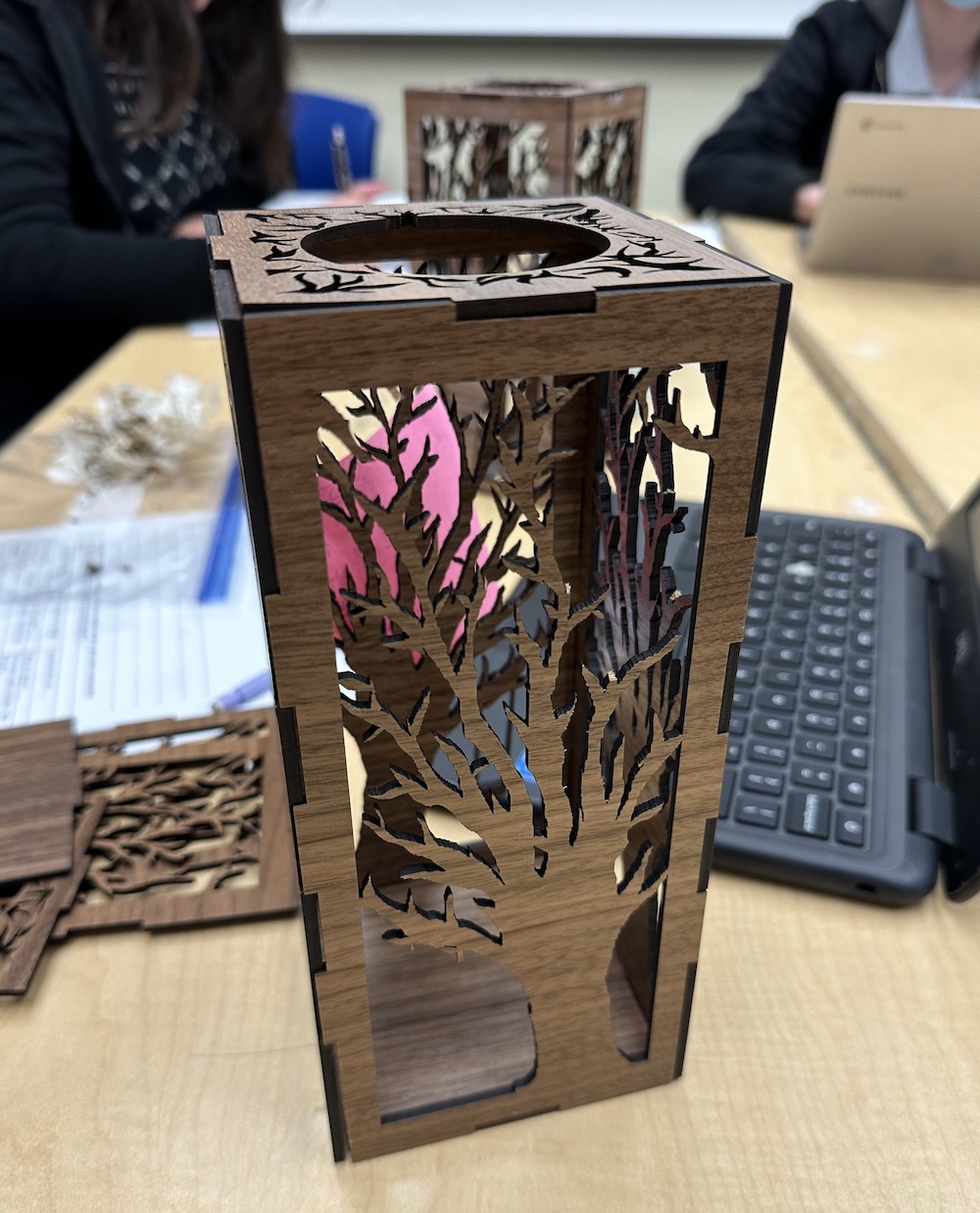
Kimberly’s tea-light holder features artfully cut illustrations of trees and a swing.
The Design & Making class is also an Art elective. Mr. Benoit told me that he encouraged his students to go deep either into aspects of mechanical design (how the pieces fit together) or artistic elements.
Other teachers have told me that they love maker classes because they offer so many different ways students can personally engage with the work.
Chess Set by Cuitlahuac Ramirez Borrego (Grade 12)


Cuitlahuac combined many elements of laser cut design — finger joints, inlays, magnetic holders — to create a chess set with many personal touches.
The top piece is held to the board with press-fit inlayed magnets, with a thoughtfully designed finger-hold for lifting it out.
It rests on a two-layered piece held in with staggered finger joints — a design element I’ve never seen before.
The board is made from inlayed maple, walnut, and acrylic. The pieces are made from wood sandwiched around acrylic.
The chess set also features hidden messages, in binary and morse code.
If you are interested in maker education, I recommend this video (11 min) of Cuitlahuac explaining his design and prototyping process and all the lessons he learned along the way.
I also love the energy of a final show-and-tell session! Other teachers and even the principal of the school dropped in to see the work.
And Mr. Benoit tells me Cuitlahuac will be his teaching assistant for the Design & Making class next semester!
Thank You
Ryan and I would like to thank Mr. Benoit and the students of Design & Making for generously inviting us to see their final projects.
Cuttle’s design is informed by our own learning journeys into geometry, design, and computational thinking. It’s inspiring to see Cuttle enabling real, physical creations that students are proud to show their peers and teachers.
The personalized nature of a project-based class, and the learning moments that spring from hands-on work with physical materials, clearly made Mr. Benoit’s Design & Making class a rich experience for all involved. (He tells us students overwhelming requested the class be offered again!)
We love that Cuttle could play a part in this.
If you are a teacher thinking of using Cuttle in your classroom, please get in touch (email toby@cuttle.xyz) and I’d be happy to walk you through any aspects of Cuttle or connect you with other teachers who have used Cuttle in their classes.

